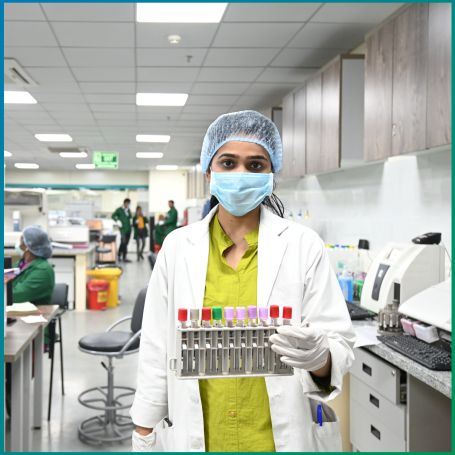
The C/S Synovial Fluid Test is a crucial diagnostic procedure used to identify infections or other abnormalities in the synovial fluid of joints.

This test plays a pivotal role in diagnosing joint-related infections, such as septic arthritis, as well as inflammatory conditions and other diseases that affect the synovial membrane and fluid. By examining the synovial fluid for the presence of bacteria, fungi, or crystals, healthcare providers can determine the underlying cause of joint symptoms, enabling timely and appropriate treatment.
1] Sample Collection (Arthrocentesis) - The C/S Synovial Fluid Test begins with the collection of synovial fluid from the affected joint. This is typically done through a procedure called arthrocentesis or joint aspiration. During this procedure, a needle is inserted into the joint space, and a sample of the synovial fluid is withdrawn. The procedure is generally performed under local anesthesia to minimize discomfort, and it is usually done in a sterile environment to avoid contamination.
2] Fluid Analysis - Once the sample is collected, it is sent to a laboratory for further analysis. The lab will examine the synovial fluid under a microscope to check for the presence of pathogens, crystals, or other abnormalities. If an infection is suspected, the fluid is cultured to grow any bacteria or fungi present.
3] Culture and Incubation - The synovial fluid is placed on specialized culture media and incubated in a controlled environment to encourage the growth of microorganisms. This process typically takes 24 to 48 hours. The microorganisms are then identified using biochemical tests, staining techniques (such as Gram staining), or molecular methods (like PCR).
4] Sensitivity Testing - Once the pathogen is identified, antibiotic sensitivity testing is done to determine which antibiotics or antifungals are most effective against the microorganism. This helps guide the treatment plan by ensuring the patient receives the appropriate antimicrobial therapy. Sensitivity testing is especially important for antibiotic-resistant organisms.
5] Reporting Results - The results of the C/S Synovial Fluid Test are typically available within 48 to 72 hours. The report will include the identified pathogen, if any, as well as information on its sensitivity to various treatments. Based on these results, healthcare providers can begin or adjust treatment to target the infection effectively.
Choosing Diagnopein Diagnostic Centre in Nagpurfor the C/S Synovial Fluid Test ensures accurate, rapid, and reliable results for diagnosing joint infections and other conditions affecting synovial fluid. With advanced laboratory infrastructure and a skilled team of microbiologists, Diagnopein utilizes cutting-edge techniques to identify pathogens such as bacteria, fungi, and crystals in the synovial fluid. The lab also performs comprehensive sensitivity testing to determine the most effective treatment, ensuring that patients receive the best possible care. Diagnopein is known for its fast turnaround times, high-quality testing, and commitment to patient safety, making it the preferred choice for healthcare providers seeking precise and efficient diagnostic solutions for joint-related infections and disorders.
1. Culture Method
2. Sample
3. Colony Count
4. Organism(s) Isolated
5. Culture Report: Culture yields growth of
6. Culture isolated after 7 days :
7. Culture isolated after 14 days:
8. Culture isolated after 21 days:
9. Ampicillin
10. Amikacin
11. Amoxicillin clavulanate
12. cefoperazon+sulbactam
13. Cefuroxime
14. Cefepime
15. Cefotaxime
16. Ciprofloxacin
17. Ertapenem
18. Gentamicin
19. Imipenem
20. Meropenem
21. Norfloxacin
22. Nitrofurantoin
23. Piperacillin-tazobactam
24. Trimethoprim-Sulfamethoxazole (Cotrimoxazole)
This test is used when a patient experiences joint pain, swelling, or fever, especially in suspected cases of septic arthritis or other joint infections. It helps identify the underlying cause.
The test detects bacterial infections (e.g., Staphylococcus aureus), fungal infections (e.g., Candida), and crystal-induced conditions like gout (urate crystals) or pseudogout (calcium pyrophosphate crystals).
The procedure involves a needle insertion into the joint, which may cause some discomfort. Local anesthesia is usually administered to minimize pain during fluid collection.
A positive result indicates the presence of an infection (bacterial, fungal) or crystals, and the lab report will include the pathogen or type of crystals, along with antibiotic sensitivity for treatment.